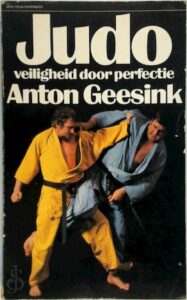Kurosawa’s first film, Sanshiro Sugata, was based on a novel by Tsuneo Tomita about the rivalry between judo and jujitsu (when Jigoro Kano began to develop judo from jujutsu, his efforts met with opposition from jujutsu practitioners).
Sanshiro Sugata, is a thrilling martial arts action tale, but it’s also a moving story of moral education that’s quintessential Kurosawa. It´s based in the history of Shiro Saigo one of the earliest judo disciples of Jigoro Kano, whilst learning the ways of Judo, he also learns about himself. He took part in the famous 1886 Tokyo Police tournament in which students of Kano demonstrated their superiority over the jujitsu practicers and secured the judo´s supremacy in the world of unarmed combat. Police as well as other japanesse public institutions included judo in their training programs.
Why judo, in a short period of time, was able to surpass the martial art in which is based on?
The methods Kano devised in his academy Kodokan, to achieve the education goals, were randori, kata, lectures and dialogue.
Judo pedagogy emphasizes randori ( literally “taking chaos”). This sparring “free practice” in which both trainees attack freely by applying various techniques they have learned, except ones considered to be dangerous, covers a variety of forms of practice, and the intensity at which it is carried out varies depending on intent and the level of expertise of the participant.
The ultimate goal of randory is to develop the ability to cope with rapidly changing circunstances and opponents, training the art of attack and defense, and nurturing the ability to react quickly and appropriately.
The use of randori , and the student´s continuing participation and interaction with other students, was one of the main reasons why Kodokan students were able to dominate other jujutsu schools.
Wallace B. Donham, a graduate of Harvard Law School and former banker, became the second dean of the Harvard Business School in 1919. Borrowing from his law school training, Donham introduced the case method, a teaching style that focuses on solving problems by studying real-life business situations.
The case method, has been adopted by many business schools around the world as a teaching method, helps students to develop skills by bringing real-life business problems into the classroom, training them to think and decide like managers.
Knowing how to analyze business problems, reconcile different perspectives, decide on a course of action and persuade others. Those are the key skills to successfully exercise the management profession.
Whether analyzing many challenges, the case method asks the student to put him or herself in the shoes of the manager in a competitive environment.
In contrast to lecture-based teaching methods, here the students do most of the talking. The professor facilitates and guides the discussion, asking questions and eliciting participation from the entire class to enrich the discussion with contrasting viewpoints, different industry experiences, and cultural backgrounds.
After participating in hundreds of case discussions, students prepare themselves to take on the challenges they will face as managers, as decision-makers and as leaders.
The case method and the judo randory, were two innovative methodological reponses to educational needs in the modernisation of the business management and the judo, as well as the reason of their succesful development worlwide in the earliest years of the twentieth century.







